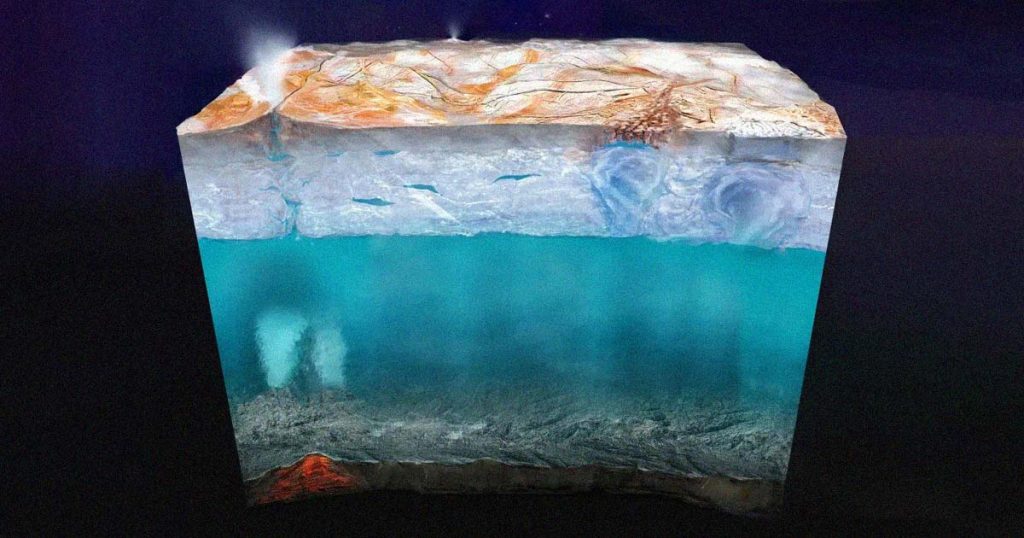
NASA and SpaceX Launch Mission to Potentially Habitable Moon (Image Credit: futurism-com)
Could Europa really support life?
We Have Liftoff
Europa Clipper has officially commenced.
The highly anticipated NASA mission to explore Jupiter’s moon Europa for signs of habitability launched on Monday from NASA’s Kennedy Space Center in Florida.
Following several days of delays caused by Hurricane Milton — and in the months before that, near-disastrous setbacks — the $5 billion spacecraft finally made its way to orbit atop a SpaceX Falcon Heavy rocket. Once Europa Clipper separated from the rocket, it formally began its 1.8 billion-mile journey to the Galilean moon.
To herald its voyage, the spacecraft successfully deployed its nearly 100-foot-long solar arrays, which will provide all the power it needs along the way. Now, the space agency will have to sit tight for about five years until it arrives at Europa.
“Congratulations to our Europa Clipper team for beginning the first journey to an ocean world beyond Earth,” NASA Administrator Bill Nelson said in a statement. “By exploring the unknown, Europa Clipper will help us better understand whether there is the potential for life not just within our solar system, but among the billions of moons and planets beyond our Sun.”
Moonward Bound
Jupiter is about 480 million miles from Earth on average, according to NASA. But in practice, Europa Clipper will need to travel close to four times that distance, making several flybys of Earth and Mars for a speed boost.
When it finally arrives at its destination, it will spend another three years performing nearly fifty flybys of Europa, imaging it in detail and sending data back to Earth each time it prepares for another close approach.
Chilling Secrets
Astronomers believe that Europa’s frozen surface belies an enormous ocean that could be potentially habitable, containing twice as much seawater as Earth.
There’s even a faint possibility that it already plays host to lifeforms — but the mission scientists stress that the spacecraft is not designed to directly detect this unlikely scenario. By the mission’s end, though, we should know if it has the right conditions to support life, which will be revelatory on its own.
Either way, Europa is an extremely promising candidate. In addition to a liquid ocean, it’s believed to have a toasty core and hydrothermal vents on the seafloor that warm the water, as well as chemical building blocks like salt and sulfur.
Scientists won’t know all of this for sure, of course, until Europa Clipper gets there and starts sending back data. And boy, will that be a glorious day.
More on space: James Webb Telescope Captures Spectacular Images of “Inside-Out” Galaxy Being Born








